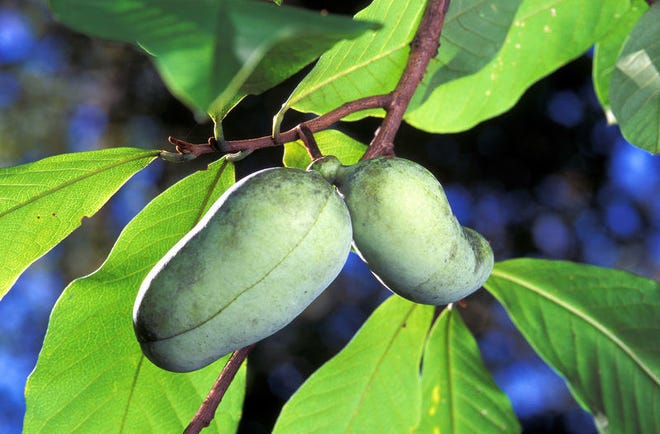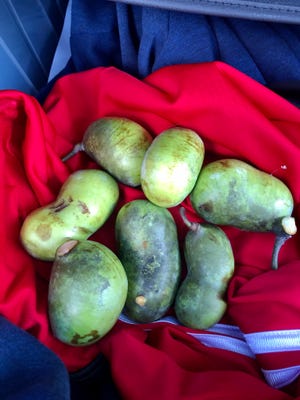

It's September and that means it's time for pawpaw season in Ohio.
The small green fruit is native to the Eastern U.S. and has been in the Ohio River Valley region for over 30,000 years. Today, there are still wild pawpaw trees all over Ohio, usually found by rivers and in the shade.
For lovers of the fruit, Thursday is National Pawpaw Day, a celebration of all things pawpaw. The annual commemoration is held on the third Thursday of September.
After the national day on Thursday, there's also the annual Ohio Pawpaw Festival in Albany this weekend. Running Sept. 17-19, the festival will feature a pawpaw cook-off, pawpaw beer, pawpaw-related works of art and more.
What is a pawpaw?
The fruit is indigenous to 26 states in the U.S., extending from northern Florida to Southern Ontario and as west as eastern Nebraska, according to Kentucky State University's Pawpaw Research Project, the only full-time pawpaw research program in the world.

Pawpaws are also sometimes known as the Kentucky banana or the hillbilly mango.
What does a pawpaw taste like?
The kidney-shaped fruit is green, with a creamy, avocado-like texture that tastes a bit like mango, pineapple and banana.
The pawpaw’s orange-yellow pulp can be used as an ingredient in gourmet items such as ice cream, wine and pies.
How to eat pawpaws
Cut the fruit in half with a knife, avoid cutting the hard seeds inside, work around them. Scoop out the fruit with a spoon and spit out the seeds. You can also use a potato peeler for the skin.
The texture of the pulp is creamy, avocado-like in texture.
Pawpaws begin to blacken just three days after they're picked, so if you cannot eat them quick enough, freeze the pulp for later use.
The fruit can be used to make a variety of foods but does particularly well in ice cream, smoothies, custards and jams.
"Anything you can make with bananas, you can do with pawpaw. So banana bread, and banana muffins and cake and things like that," Sheri Crabtree, a pawpaw specialist at Kentucky State University, previously told The Enquirer.
Are pawpaws and papayas the same thing?
No, although they look slightly similar, they come from different families. Papayas, or Carica papaya, belong to the small Caricaceae family. And pawpaws, or Asimina triloba, belong to the Annonaceae family.
Papayas are native to tropical regions of Central America, while pawpaws are native to eastern North America.
Their taste and color also varies. When ripe, papayas turn orange or deep yellow in color, and pawpaws turn yellow when ripe, are smaller, and have a flavor that resembles a combination of mango, pineapple and banana.
Where to find pawpaws
Wild pawpaws typically grow in clusters on trees, and can be found in parks and wooded areas.
The pawpaw season is short, and typically last only eight weeks. In Ohio, pawpaws usually ripen in late August and as late as October, while the fruits in the Deep South are ready a few months earlier, late July or early August.
They're also not typically found in grocery stores.
"I think the main reason is that they have a very short shelf life, they're very perishable. When they're ripe, the bruise easily. So they can't be stored for a long time and they can't be shipped long distances," Crabtree previously told The Enquirer.
When they're ripe and ready to eat, they usually fall right off the tree.
According to Cutler Real Estate, you can find pawpaws around Greater Cincinnati around these locations:
- Ault Park
- Burnet Woods
- Caldwell Preserve
- French Park
- Mt. Airy Forest
- Sharon Woods
- Shawnee Lookout
Source link









